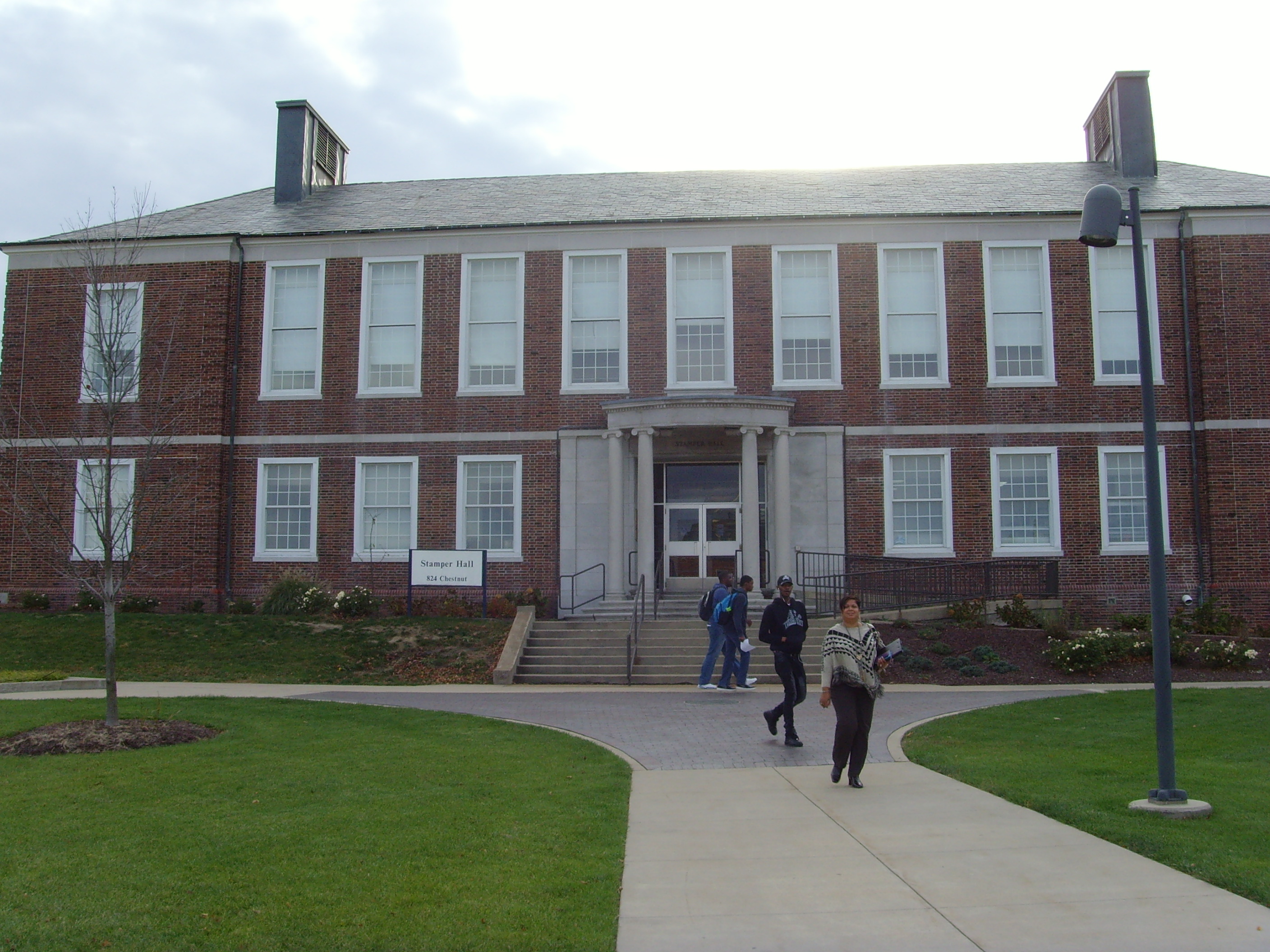Celebrating 75 Years of Stamper Hall at Lincoln University
Office of Communications and Marketing
Young Hall
820 Chestnut Street
Jefferson City, MO 65101
 Lincoln University of Missouri’s Stamper Hall was constructed in 1948.
Lincoln University of Missouri’s Stamper Hall was constructed in 1948.
This year marks the 75th anniversary of Stamper Hall, a cornerstone of Lincoln University’s campus and home to the School of Business. Originally constructed in 1948 as the Inman E. Page Library, this Georgian-style building has undergone significant transformations over the decades, reflecting the growth and evolution of both the university and its academic programs.
The Early Years: From Page Library to Stamper Hall
Built in 1948, the Inman E. Page Library served as the hub of learning and scholarship at Lincoln University for nearly half a century. In 1997, a new library was constructed on the southeast corner of the university, prompting a repurposing of the original building. After an extensive renovation and remodeling process, the structure was renamed Cletus Stamper Hall in 2001, in honor of Dr. Cletus Stamper, a longtime educator and leader in the College of Business and Economics. Today, Stamper Hall houses the Lincoln University School of Business, continuing its legacy as a center of academic excellence.

The original Inman E. Page Library at night.
Tracing the Origins of the School of Business
The roots of Lincoln University's School of Business can be traced back to the 1890s with the introduction of bookkeeping classes. As the demand for business education grew, the curriculum expanded to include courses in economics and accounting. By 1939, the business department was formally established, offering a Bachelor of Business Administration degree. Over the years, additional programs were added, including an MBA degree in 1975, which further solidified the department’s status as a key player in the university's academic offerings. The School of Business officially became a standalone entity in 1983, and today it offers undergraduate degrees in business administration, accounting, marketing, public administration and business education, alongside a master’s degree in business administration.
Milestones in Stamper Hall's History
Stamper Hall has witnessed numerous milestones over its 75-year history. After its transition from a library to an academic building in 2001, the hall became a modern learning space dedicated to business education. The onset of the COVID-19 pandemic in 2020-2021 presented unprecedented challenges, but the School of Business remained steadfast in its commitment to its students, adhering to stringent health protocols to continue providing quality education.
 From left to right: Dr. Cletus Stamper, H. Monroe Purnell and A.P. Marshall.
From left to right: Dr. Cletus Stamper, H. Monroe Purnell and A.P. Marshall.
Honoring the Pioneers: Dr. Cletus Stamper, H. Monroe Purnell and A.P. Marshall
The history of Stamper Hall and the School of Business is intertwined with the contributions of several notable individuals.
Dr. Cletus Stamper, for whom the building is named, was a dynamic figure in Lincoln University’s history. Born in Atlanta in 1916, Stamper's family later moved to New York, where he excelled as a high school athlete. He earned a degree in business from Virginia State and a master’s degree in education from Columbia University. After serving in the U.S. Armed Forces during World War II, Stamper pursued further education at Columbia, earning both a master’s degree and a doctorate in business administration.
In 1950, Dr. Stamper joined Lincoln University as an assistant professor and held various influential positions over the next 33 years, including instructor, university business manager, department head and dean of the College of Business and Economics. His leadership was pivotal in shaping the direction of business education at the university. Dr. Stamper retired in 1983 and passed away on December 14, 1997, in Maryland at the age of 81
Henry Monroe Purnell, born in 1907 in Eastern Shores, Maryland, developed a passion for academics early in life. He began his education at Wilberforce University, where he earned a bachelor’s degree in education, and later obtained a master’s degree in business in 1936. The following year, Purnell joined Lincoln University as an instructor of secretarial training. After serving in World War II, he returned to the university and continued to shape its business curriculum for nearly three decades. As the business department expanded, he embraced new responsibilities, including serving as interim director of the department in 1951. Purnell remained dedicated to Lincoln University until his sudden passing in 1965, marking 28 years of service.
Albert P. (A.P.) Marshall, a native of Texarkana, Texas, made a significant impact on the building's history. After graduating from Lincoln University with a degree in library science in 1939, he was hired as an assistant librarian. He served in the U.S. Coast Guard during World War II and returned to his position at Lincoln afterward. In 1950, Marshall earned a master’s degree in library science from the University of Illinois and was promoted to university librarian, a role he held until 1969. During his tenure, he expanded the library's holdings to support the growing student population and the introduction of new academic disciplines. His contributions laid the foundation for the library's eventual transformation into Stamper Hall.

Stamper Hall now houses Lincoln University's School of Business.
Looking Ahead: The Future of Stamper Hall
As Stamper Hall celebrates its 75th anniversary, Lincoln University honors its rich history while looking forward to the future. The School of Business remains committed to fostering innovation, leadership and academic excellence. By embracing new technologies and pedagogical methods, Stamper Hall continues to evolve, ensuring that Lincoln University’s legacy of excellence in business education will endure for generations to come.
In commemorating 75 years, Lincoln University invites the community to reflect on Stamper Hall’s storied past and join in celebrating the bright future ahead.
